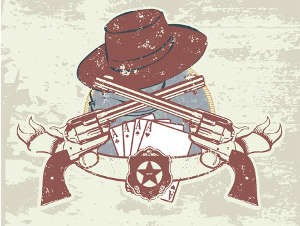Poker History Quick Lesson

To find out the true history or origin of something, society relies heavily on verbal or written accounts on the subject. Certain things have been passed from one generation to the next with little verbal account.
Chances are nobody thought to write it down or talk about the origination hence the reason why most things simply get lost over time. Such is the fate of the game of poker.
History of Poker
Since there were no formal records, no one can really say for sure where and when the game originated. Some folks say that poker began from one single table, while others believe it was a group of individuals that invented the game. Sadly, the true origins of poker is still unknown.
Many experts believe that the game of poker originated in New Orleans. This bustling metropolice once belonged to the French in the early 1800’s. Since poker is a gambling game one can only assume that the game started in a floating saloon, also called Mississippi steamers.
Back then, it is believed that poker was played by 4 players with five cards each out of a deck of twenty cards. Those who first started playing the game called it Poque, a similar game that originated in France. But most historians are of one accord that poker was derived from the 15th century German card game called Pochen or Poch.
Poque, however, differs from poker. The game allows a maximum of 6 players and up to 36 cards. So, if poker is a play-off of Poque, why was the player maximum reduced to four and the cards to 20? Some believe that the French rival game Bouillotte might have had something to do with this.
How the Game Was Played
Consequently, poker adopted its English name in the 1830’s. Since then the game has become a household name across the globe. As it grew in popularity the 52 card deck replaced the former 20 card deck to accommodate more players. Some believe the earlier version of the game did not include a draw, players only made bets on limited series of combinations. These combinations included: two pair, one pair, four of a kind, triplets and full-the only combination that has five cards.
Poker now adopted a new combination, better known as the flush. At the time a straight was not part of the game. Between 1830 and 1845 poker became extremely popular.
Since Brag was part of the game’s English counterpart, players were already familiar with the term draw. After the flush a second betting interval was introduced and the draw was added to the game.
How Poker Evolved
Another great development was the addition of ”jackpots”. In the earlier days of the draw poker, the term ”jackpot” was a reference to Gardena jackpots and at times called ”jacks to open”. During the first betting round, players were only allowed to open their hands if they had a pair of jacks or better.
The reason why jackpots were introduced to the game was to stop rowdy players from betting on every single hand. One can say that it was a control mechanism of sorts. As time marched on it also killed the art of bluffing, essentially this is what’s poker is all about. In 1864 the straight combination was finally introduced. Players who held a flush and straight could now beat a full house. The straight was an exiting addition to the game. According to experts, without straights or straight flushes, four kings with an ace kicker or four aces are the highest possible combinations. This type of hand is virtually impossible to beat or to match.
Over the years poker became known as one of the greatest American pastimes. Eventually, it became more than just a fun game but a game of skill as well. Although the origins of the game is still shrouded in time, it’s still an iconic part of American history.
[addtoany]
0 Comments
Be the first to comment